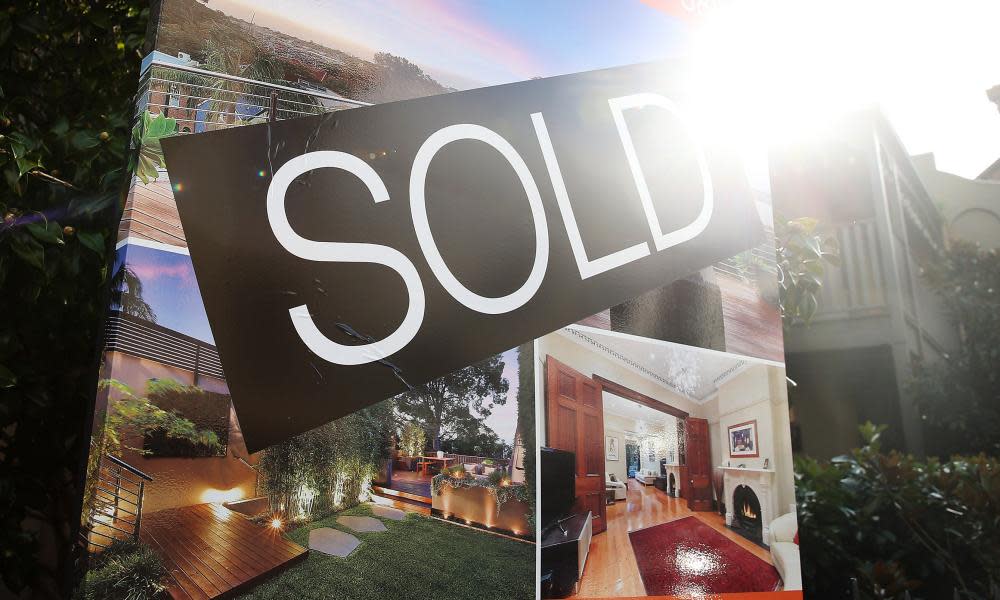$15,000 more a year: homeowners brace as interest rate hikes bring ‘mortgage cliff’ closer

Jack Lynch and his partner moved out of Sydney to the picturesque but cheaper Blue Mountains to become homeowners in 2021, and promptly locked in a cut-rate, fixed-rate loan.
The couple, in their early 30s, are now bracing for that loan to expire, and for repayments to increase by more than $2,000 a month.
“It is going to be a massive, massive struggle,” says Lynch.
His partner, who is on maternity leave, has picked up two teaching jobs, and Lynch is negotiating with his own employer to take on extra work. At the same time, they are caring for three young daughters, including a one-month-old.
“We moved so far away to afford a mortgage instead of rent to have extra room for the girls – that line of thinking is now totally pointless.”
Lynch and his partner are among 880,000 Australian households with fixed-rate mortgages expiring this year who will need to find hundreds, if not thousands, of dollars more each month to meet repayments, as an era of cheap rates is replaced with financial stress.
Sign up for Guardian Australia’s free morning and afternoon email newsletters for your daily news roundup
Along with the personal toll, the “mortgage cliff”, as it is widely known, represents one of the biggest challenges for the property sector and wider economy, with the peak resetting period starting in July, according to bank data.
The mortgage cliff cohort will need to meet new repayment schedules that take into account a dozen rate rises from the Reserve Bank instituted in just over a year, including the hike announced on Tuesday, which took the official cash rate to the highest level in 11 years at 4.1%.
Many will move from mortgage rates of about 2% to well above 6%.
Newer buyers are most at risk, given their ability to meet repayments were evaluated when rates were at historic lows, and they have not enjoyed the years of property price increases recorded in the lead-up to the pandemic.
Tim Lawless, research director at property analytics company CoreLogic, says the size of the fallout will depend on how high interest rates go, and for how long. He says the unemployment rate is also significant, given people with jobs can often rearrange spending to focus on their mortgages.
“The longer interest rates stay higher, then arguably the more households will have to dip into their savings buffers, and that’s not going to last for ever,” says Lawless.
“It’s probably more of a gradual phenomenon rather than something that’s going to happen overnight.”
While the peak period for expiring fixed loans starts next month, it won’t necessarily trigger a surge in defaults, given the usual capacity of even stressed households to sustain higher repayments, at least for a while.
The Reserve Bank refers to the “mortgage cliff” as a “ramp up”, noting that the pressure builds over time as opposed to falling off a precipice.
Along with the 880,000 expiring fixed loans in 2023, there are a further 450,000 due to expire in 2024 and beyond.
While many mortgage holders are under stress, stronger than expected demand for housing is nudging property prices higher. This is keeping value in the primary asset and helping many avoid the difficult scenario of falling into negative equity, when the amount owed is more than the value of the home.
While property prices would typically fall, or at least moderate, during a period of fast-rising interest rates, Australia is also facing a shortage in homes, keeping prices elevated.
“That’s why the outlook is still fairly uncertain,” says Lawless.
“Even if we do see demand falling away due to higher interest rates, there’s a lot of people who need a roof over their heads.”
While the cash rate has been higher in the past, the speed of the rate-hiking cycle has put many households into difficult positions. The Reserve Bank has indicated rates may need to still go higher to combat persistent inflation.
Households servicing a $576,985 mortgage – the average size of an owner-occupier loan – will need to find $1,250 more each month than they did prior to the rate-hiking cycle, according to Finder, a research and comparisons company.
This equates to an additional $15,000 over a year, on average.
Related: ‘I’m obviously not first choice’: rental crisis forcing older Australians back into share houses
For Lynch, it will be an extra $24,000 a year; an amount he is unsure the family can find.
He says their savings will only cover five months of the inflated repayments that will kick in after the fixed loan expires in September.
“What if the fridge breaks down? What if one of the kids gets hurt or sick? Our savings are for emergencies.”

 Yahoo News
Yahoo News 
